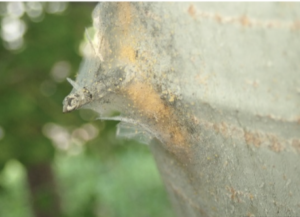Free Spider Mites Estimate
Contact us today for a free spider mites estimate. Bailey Tree has 30+ years of experience in outdoor pest control, plus numerous ISA-certified arborists and college degrees on staff. We are the most experienced pest control experts in Denver for treating all varieties of mites and spider mites. Call now to start a free estimate!
I have a case of the creepy-crawlies and it isn’t even Halloween!
Spider mites feed on the sap of trees and shrubs, just like aphids do - and their piercing mouth does physical damage to the individual plant cells.
When mites are present the leaves are left with a mottled pattern. The activity results in reduced food production for the plant and/or premature leaf drop.
Spider mites are in the Arachnid family - and in large populations you will see webbing. Their webbing does not consist of the cone at the base, as is common with most species of spiders. Instead, their webs are of a much finer design without the cone.
Spider mites enjoy very hot areas and low humidity environments. Aphids and mites both tend to be observed on the underside of the plants’ leaf surface as a protection mechanism from predators.
Some natural predators include Lacewings, Minute Pirate Bugs, and Spider Mite Destroyer Lady Beetle, among others.
Our arborists can visit your property and assess the needs for preventive and curative treatments along with Integrated Pest Management (IPM) solutions.
Photo credit for this page:
Whitney Cranshaw, Colorado State University, Bugwood.org

